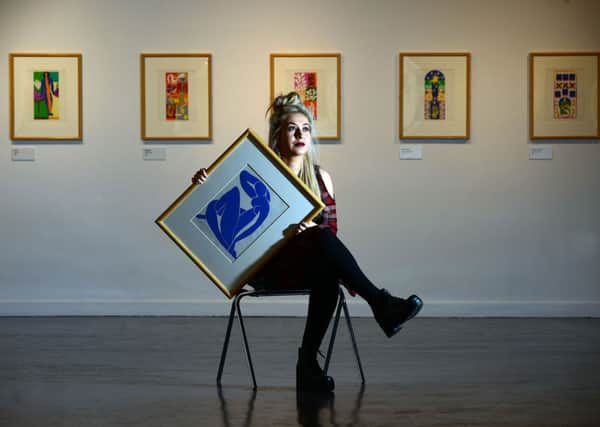Drawing created by scissors is cut above the rest


Last summer’s exhibition of Matisse’s cut-outs broke visitor records at the Tate Modern in London, becoming its most popular ever show.
But now prints of some of the large cut-outs the artist created in the last four years of his life are coming to one of the lesser known enclaves of Yorkshire’s art world. From today visitors to The Civic Gallery, in Barnsley, can feast their eyes on the rich colours of his work and enjoy their life-affirming spirit.
Advertisement
Hide AdAdvertisement
Hide AdThe 35 prints, from a Hayward Touring Exhibition, include many of Matisse’s iconic images such as The Snail and the Blue Nudes.
Exhibitions curator David Sinclair said it was an “absolute” delight to host the exhibition of posthumous prints, adding: “His original cutouts were 4m or 5m square. He created them when he was bed-ridden. He used to have a long stick with a piece of charcoal which he used to draw from the bed onto massive pieces of paper and his assistants would cut them out and paint them for him.
“In the 1950s they were collated into a book called the Verve, and these prints are from that. The lithographs made them smaller and more accessible.”
To date tens of thousands of people have seen the touring exhibition and Mr Sinclair is expecting the prints to exert their usual power of attraction.
Advertisement
Hide AdAdvertisement
Hide AdHe said: “They are iconic images; they have been indoctrinated into our existence. They are very accessible and easy and they are beautiful as well.”
Aged 18, Matisse went to study law. But after a bout of appendicitis, during which his mother gave him paints and an easel to pass the time, he began drawing and left to study art in Paris in 1890.
At first strongly influenced by the Impressionists he soon created his own style. In 1905 he and his colleagues were branded the Fauves - wild beasts - for their unconventional use of colour.
By the time he was in his 70s, he was confined to a wheelchair but he devised a new technique to cut shapes from sheets of specially-painted paper, pouring out a torrent of designs, even as his health declined, for stained glass windows, church vestments and ceramic tile murals. For smaller pieces of work his assistants would paint the paper for him, which he would then cut out and arrange; for larger works he would direct his assistants to pin shapes on the wall, making numerous adjustments until they were right.
Advertisement
Hide AdAdvertisement
Hide AdMatisse once declared that he wanted his art to be “a soothing, calming influence on the mind, something like a good armchair which provides relaxation from physical fatigue” - but the prints should also be a great cure for the springtime blues.
*To find out more about the technique, a workshop is being held this Friday, with artist Karen Stansfield, from 10.30am to 12.30pm and 1.30pm to 3pm
“Drawing with Scissors; Late works 1950-1954” continues until March 14.